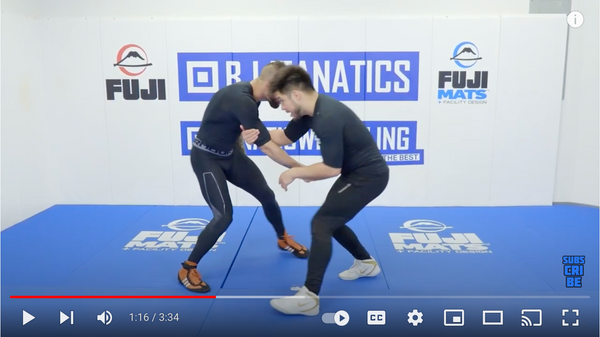Welcome to the third installment of the arqeonarchitecture Breakdown series, brought to you by everyone’s favorite social scientist black belt.
Shoulder locks are everywhere, especially once you know the underlying principles that connect every single one of them. They’re one of the most underrated submissions in the Brazilian jiu-jitsu arsenal. Not the sexiest by any means, but one of the most accessible. In fact, most shoulder lock submissions come via another attack – an armbar or triangle – in which the opponent, busy defending the first submission, leaves him or herself open for the shoulder lock.
Understanding how a shoulder lock works – the underlying principles – will help you both recognize their opportunities, as well as make any required adjustments to effectively and efficiently execute them.
So, let’s examine this most underrated submission...
]]>Welcome to the third installment of the arqeonarchitecture Breakdown series, brought to you by everyone’s favorite social scientist black belt.
Shoulder locks are everywhere, especially once you know the underlying principles that connect every single one of them. They’re one of the most underrated submissions in the Brazilian jiu-jitsu arsenal. Not the sexiest by any means, but one of the most accessible. In fact, most shoulder lock submissions come via another attack – an armbar or triangle – in which the opponent, busy defending the first submission, leaves him or herself open for the shoulder lock.
Understanding how a shoulder lock works – the underlying principles – will help you both recognize their opportunities, as well as make any required adjustments to effectively and efficiently execute them.
So, let’s examine this most underrated submission:
A Shoulder Lock Defined
Have you ever tried to describe a shoulder lock to someone who has no knowledge of Brazilian jiu-jitsu? No? Give it a try. It’s harder than you think. Most people begin explaining how to execute one, rather than what exactly it is.
No matter what shoulder lock you do – americana, kimura, omoplata, platas of other kinds – they are all shoulder attacks. More specifically, they seek to hyper-rotate the shoulder in the shoulder socket, past the point in which the ligaments allow it to move.
A Friendly Anatomy Lesson

Understanding the anatomy of the body – how it’s put together, how it’s supposed to move, and most importantly how it’s not supposed to move – will give you a deeper understanding of how submissions work.
The shoulder is a ball-in-socket joint, created by the head of the humerus (that single, long bone of your upper arm) and a shallow depression on the end of your scapula. The bones are held into place by various ligaments, tendons and muscles of the rotator cuff. While their orientation allows for the shoulder to be the most mobile joint in the human body, they are not infallible. This is especially the case if you orient the arm in such a way to restrict their movement.
It’s All About the Angle
So how do you orient the arm to restrict the shoulder’s movement, and therefore compromise the mobility of the shoulder in the shoulder socket? It’s all about the angle.
Humor me in a quick demonstration on your own body. Hold your arm out, completely straight, away from the side of your body. Now twist just your thumb around. When the arm is completely straight, most people will be able to get at least 180 degrees of rotation in the shoulder. Now make a 90 degree bend in your arm, and try to rotate your forearm around. You’ll be lucky if you get barely more than 90 degrees of rotation. Okay, now bend your wrist as close to your shoulder as possible – making an acute angle – and try rotating again. You’ll get even less.
The angle of your arm is what constricts your shoulder’s rotation in the socket. The more acute the angle, the more restricted the movement, and the faster and more efficient your shoulder lock will be. Every single shoulder lock you’ll ever see relies on this most basic principle.
Black Belt Bonus Tips
Of course, what would my breakdown be without a few super secret – shhhh – black belt tips in executing the shoulder lock?
- If there’s an armbar, there’s a shoulder lock – In attacking the armbar, you’re attacking the elbow joint. The shoulder lock is an easy 90-degree (or more!) bend away. In fact, your opponent will often do all the hard work for you. In trying to escape the armbar, they’ll actively put that bend in their arm, allowing you just a few adjustments to hyper rotate the shoulder in the shoulder joint. The easiest example of this is an armbar from side control, which, with just a bend, quickly becomes either a kimura or armericana from side control.
- Aim for the back of the head – When you’re seeking a kimura-oriented shoulder lock (one in which the wrist is pointed down toward the torso and not up toward the head), try to put your opponent’s wrist on the back of his/her head. This will allow you to keep the shoulder lock close to your opponent’s body and maintain a nice acute angle without having to consciously think about it.
Want more BJJ Breakdowns? Check out these:
]]>














































